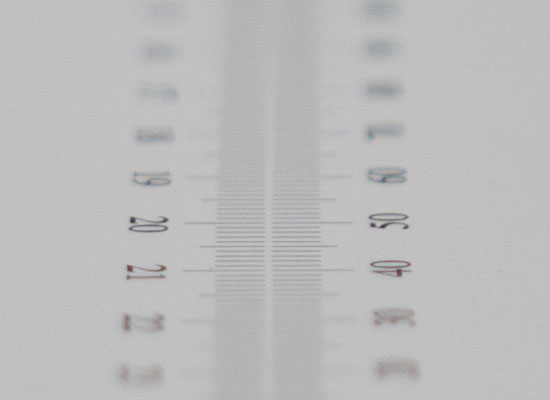|
Sigma 18-35mm f/1.8 DC HSM | A ("Art") - Review / Test Report - Analysis |
|
Lens Reviews -
Canon EOS (APS-C)
|
|
Page 2 of 3

Distortion
Given the small zoom range, you can expect rather moderate distortion figures and this is mostly a valid assumption. At 18mm, the Sigma lens produces a moderate amount of barrel distortion (~2%). There're barely any distortions in the middle range. However, at 35mm there's a higher than usual pincushion distortion (~2%).
Vignetting
Ultra-low aperture lenses tend to show heavy light falloff at max. aperture. This also applies to the Sigma - the vignetting varies around the 1.5EV (f-stop) mark at f/1.8. This is easily visible in many scenes. However, the issue is mostly resolved at f/2.8 and gone beyond.

MTF (resolution)
The Sigma 18-35mm f/1.8 DC HSM | A produced nothing short of stunning resolution figures in the MTF lab. The center performance is already excellent at f/1.8 but downright outstanding between f/2.8 and f/5.6. However, the glory doesn't stop here - the borders are easily on a very good level at large apertures and even touch excellent levels at medium aperture settings. The corners are also snappy. At f/8 you may spot a slight downturn due to diffraction but this is still rather irrelevant here.
The centering quality of the tested sample was good. Field curvature is not an issue.
Please note that the MTF results are not directly comparable across the different systems!
Below is a simplified summary of the formal findings. The chart shows line widths per picture height (LW/PH) which can be taken as a measure for sharpness.
If you want to know more about the MTF50 figures you may check out the corresponding Imatest Explanations
Chromatic Aberrations (CAs)
Lateral chromatic aberrations (color shadows at harsh contrast transitions) are low and not disturbing. They remain below 1px on the average at the image corners at 18mm and 24mm and are negligible at 35mm.

Bokeh
While not a number game, the quality of the bokeh (out-of-focus blur) is a major aspect for an ultra-large aperture lens. The Sigma is pretty good but it has its issues here. However, to be fair - this applies to most standard zoom lenses.
Out-of-focus highlights show a near-circular shape at large aperture settings but the inner zone of these discs is clearly nervous. The circular shape remains mostly intact till about f/4 (tested at 35mm). "Cat's eyes" in the image corners are not so much of an issue surprisingly although you can spot a slight deterioration at f/1.8.
 While this may not sound impressive, the quality of the blur in the focus transition zone is actually very good (smooth) for a standard zoom lens - both in the background and foreground.
While this may not sound impressive, the quality of the blur in the focus transition zone is actually very good (smooth) for a standard zoom lens - both in the background and foreground.

Bokeh Fringing
Bokeh fringing is an axial color fringing effect. It can show up as purple halos in front of the focus point and greenish halos in the background. Just like most of ultra-large aperture lenses the Sigma is also affected by this. As to be expected the effect is most pronounced at f/1.8 and decreases the more you stop down. You can still spot some traces at f/4 although it's not really relevant here anymore.
|
Move the mouse cursor over the f-stop marks below to observe the respective LoCAs
|
| f/1.8 |
f/2.8 |
f/4 |
|

|
|